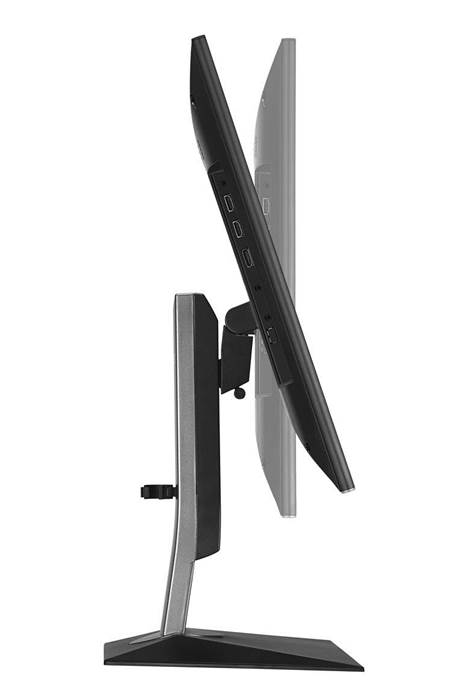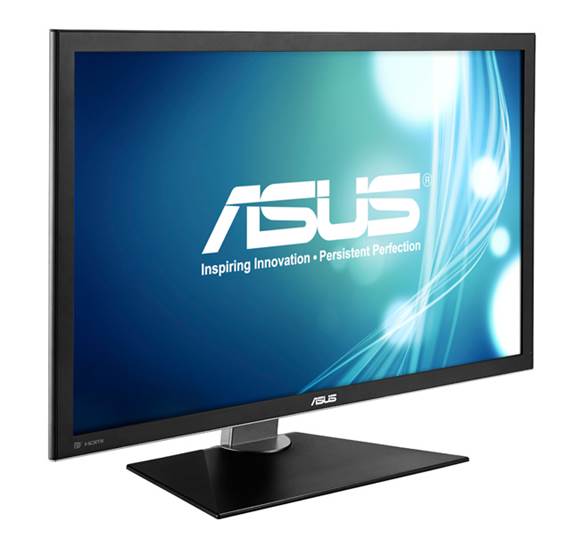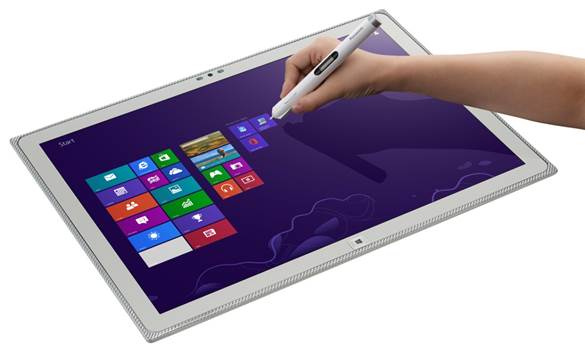Computer users have been able to operate their systems at
resolutions considerably higher than those found on HDTVs for years now, and
displays are keeping right up with the 4K trend. But just as with TVs, you’ll
pay dearly for the privilege of pushing all those pixels - at least right now.
The first consumer 4K monitor just hit the market: the Asus
PQ321. It’s a stylish-looking display with a fine array of features and good
viewing angles, but this 31.5-inch monster packs a terrifying price tag:
$3,499.99.

Displays are
keeping right up with the 4K trend
Asus’ display is just the beginning. Just before we
published this issue, Dell officially announced three new 4K monitors of its
own, ranging in size from 24 inches ($1,400) to 32 inches ($3,500). Chances are
it won’t be long until other manufacturers catch up.
But will consumers? Even with outstanding display
capabilities, price remains a stumbling block. Most newer video cards let you
connect four 1,920-by-1,080 monitors, which could cost you as little as $400
for the set - and all you’ll have to contend with are the bezels.
Asus PQ321
Geared toward photo and video editors, gamers, or anyone
requiring the pixel density and superior image detail 4K affords, this
incredibly expensive monitor offers exquisite image detail but substandard
color accuracy that may turn off purists.

Asus PQ321
Specifications
·
Price: $3,499
·
Display Size: 31.5-inch IGZO
·
Resolution: 3840 x 2160
·
Aspect Ratio: 16:9
·
Brightness: 350 cd/m2
·
Contrast Ratio: 800:1
·
Response Time: 8ms (Gray to Gray)
·
Viewing Angle: 176° vertical / 176° horizontal
·
Display Type: IGZO (Indium Gallium Zinc Oxide)
·
Connectors: 2 x HDMI, DisplayPort, RS-232C, 3.5mm mini-jack
·
Power Consumption: 93W (Typical), <6W (Power Saving), <1W
(Power Off Mode)
·
Speakers: 2 x 2W stereo RMS speakers
·
Stand: Tilt (+25 degrees to 5 degrees), Swivel, Height
·
Dimensions (with stand): 750 mm x 489 mm x 256 mm
·
Weight: 13 kg
·
Included Accessories: Cable clamp, power cord, power adapter,
DisplayPort cable, Warranty card, RS-232C conversion cable, Setup manual
·
Warranty: 3 years casing, 3 years panel, 1 year parts and
accessories (optional)
·
Overall: 3.5/5
Tablets and other devices
The Lenovo IdeaPad Yoga 2 Pro we review in this issue is one
example of a laptop supporting 4K, but it’s a standard-size system. Panasonic’s
Toughpad 4K Tablet, slated for release in early 2014, on the other hand, is a
5.27-pound, 20-inch enterprise-aimed tablet with a 3,840-by-2,560-resolution
display with ten-point touch. And, par for the course for the Toughpad line,
it’s designed to survive a drop as high as 30 inches. The Toughpad 4K Tablet’s
price? A cool $6,000.

The Lenovo IdeaPad
Yoga 2 Pro is one example of a laptop supporting 4K
Samsung also recently announced that it’s planning on
integrating 4K into more of its devices by 2015. Given its prominence and
popularity in the phone and tablet markets, Samsung could spearhead the 4K
revolution almost all by itself.
Panasonic Toughpad 4K Tablet
The business world can get rough, but the Toughpad 4K Tablet
is prepared, with a magnesium-alloy frame and a case reinforced with glass
fiber. This “highest-resolution display ever sold commercially” is also loaded
with an Intel Core i5 vPro processor, 8GB of RAM, and a 256GB solid-state
drive.

Panasonic Toughpad
4K Tablet
Specifications
·
Price: $6,000
·
Hardware and software: Microsoft® Windows 8.1 Pro, Intel® Core™
i5-3437U GHz vPro™ Processor - 1.9GHz with Turbo Boost up to 2.9GHz, NVIDIA
GeForce GT 745M, 2GB dedicated VRAM, 256GB SSD, 8GB RAM, HD 720p webcam with
microphone
·
Durability: 2.5-foot drop rating (bottom side), 1-foot drop
rating (26 drops), Magnesium alloy chassis and GFRP rear case
·
Display: 20” 4k 3840 x 2560 LCD with LED backlighting, 10-point
capacitive multi touch with optional optical pen, IPS alpha display, Ambient
light, magnetic, gyro and acceleration sensors, Automatic screen rotation,
15:10 aspect ratio
·
Interface and expansion: USB 3.0, SD card (SDXC),
headphone/speaker jack and docking connector
·
Wireless: Wi-Fi and Bluetooth®
·
Dimensions & Weight: 18.7 x 13.1 x 0.5 inch, 2.4 kg
·
Security: Built-in Smart Card reader, Security Cable Loop